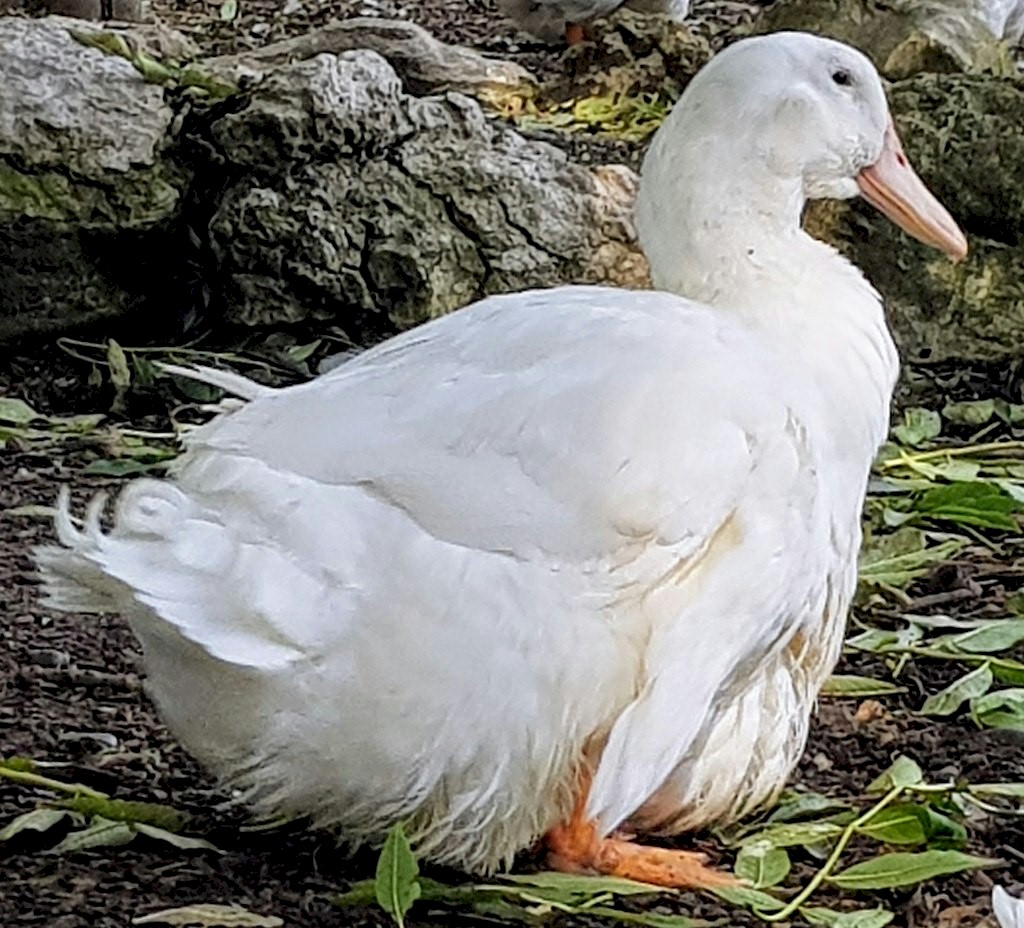 |
| Photo Source: Wikipedia.org |
Aylesbury ducks are a large breed with pure white plumage, a pink bill, orange legs and feet, an unusually large keel, and a horizontal stance with its body parallel to the ground.
The origin of the Aylesbury duck is not clear. Before the 18th century, there were few records of duck breeds in England, and the common duck, which was raised for farming, was a domesticated form of the wild mallard.
In the 19th century, duck rearing became a major industry in Aylesbury, with farms in the surrounding countryside. Fertilized eggs were brought to the town's Duck End, where local residents would rear the ducklings in their homes. The opening of a railway to Aylesbury in 1839 allowed cheap and quick transport to the markets of London, making duck rearing highly profitable. However, by the 1860s, the duck rearing industry began to move out of Aylesbury, and the industry in Aylesbury itself started to decline.
In 1873, the Pekin duck was introduced to the United Kingdom, which was hardier and cheaper to raise, even though its meat had a poorer flavor compared to the Aylesbury duck. Many breeders switched to the Pekin duck or to Aylesbury-Pekin crosses. By the beginning of the 20th century, competition from the Pekin duck, inbreeding, disease in the pure-bred Aylesbury strain, and the rising cost of duck food, led to the decline of the Aylesbury duck industry.
The First World War severely damaged the remaining duck industry in Buckinghamshire, wiping out the small-scale producers and leaving only a few large farms. The disruption caused by the Second World War further damaged the industry. By the 1950s, only one significant flock of Aylesbury ducks remained in Buckinghamshire, and by 1966, there were no duck-breeding or -rearing businesses of any size remaining in Aylesbury itself.
Although there is only one surviving flock of pure Aylesbury ducks in the United Kingdom and the breed is critically endangered in the United States, the Aylesbury duck remains a symbol of the town of Aylesbury, appearing on the town's coat of arms and on the club badge of Aylesbury United.